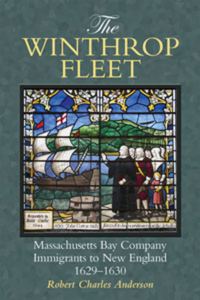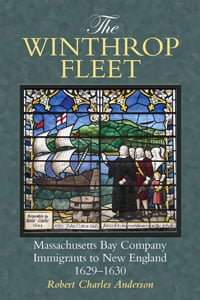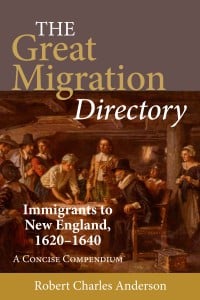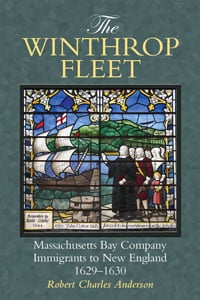In case you were wondering, American Ancestors' Great Migration Study Project continues to add new research to uncover the details of immigrants who came to New England between 1636 and 1638. NEHGS will publish a first volume by Ian Watson in early 2023 that will..
Continue reading[Editor's note: This blog post originally appeared in Vita Brevis 12 April 2019.]
In early 2015 I had just completed work on The Great Migration Directory: Immigrants to New England, 1620-1640, with abbreviated entries for each known head of household or isolated..
Continue reading →[Editor's note: This blog post originally appeared in Vita Brevis on 24 March 2014.]
While the majority of the immigrants to New England between 1620 and 1640 were Puritans of some variety, a minority were conventional, conforming members of the Church of England, or..
Continue reading →In early 2015 I had just completed work on The Great Migration Directory: Immigrants to New England, 1620-1640, with abbreviated entries for each known head of household or isolated individual participant in the Great Migration. The result was an alphabetical listing..
Continue reading →[Editor's note: This post originally appeared in Vita Brevis on 22 August 2014.]
Now that my book on genealogical research methods (Elements of Genealogical Analysis) is out, I have turned my attention to the series of lectures I will be delivering in October and..
Continue reading →The Great Migration Directory attempts to include all those who immigrated to New England during the Great Migration, and only those immigrants. After much examination of the historical record, and particularly of the activities of the passenger vessels each spring, I..
Continue reading →In the fall of 2010 I was in the midst of researching and writing the seventh and final volume in the Great Migration second series. The publication of that volume in 2011 would mean that sketches had been published for all Great Migration immigrants from 1620 to 1635,..
Continue reading →Now that my book on genealogical research methods (Elements of Genealogical Analysis) is out, I have turned my attention to the series of lectures I will be delivering in October and November; these, in turn, will form the basis for a future book entitled Puritan..
Continue reading →Even as the Massachusetts Bay Company was establishing itself in New England in 1630, another London-based joint-stock company, the Providence Island Company, was beginning its settlement project on a small Caribbean island off the coast of Nicaragua. The Providence..
Continue reading →The activities of the Massachusetts Bay Company in 1629-30 were uniformly organized from the top down. The Company either purchased or hired the vessels to carry the passengers and provisions. The passengers themselves, and especially the critically important..
Continue reading →




